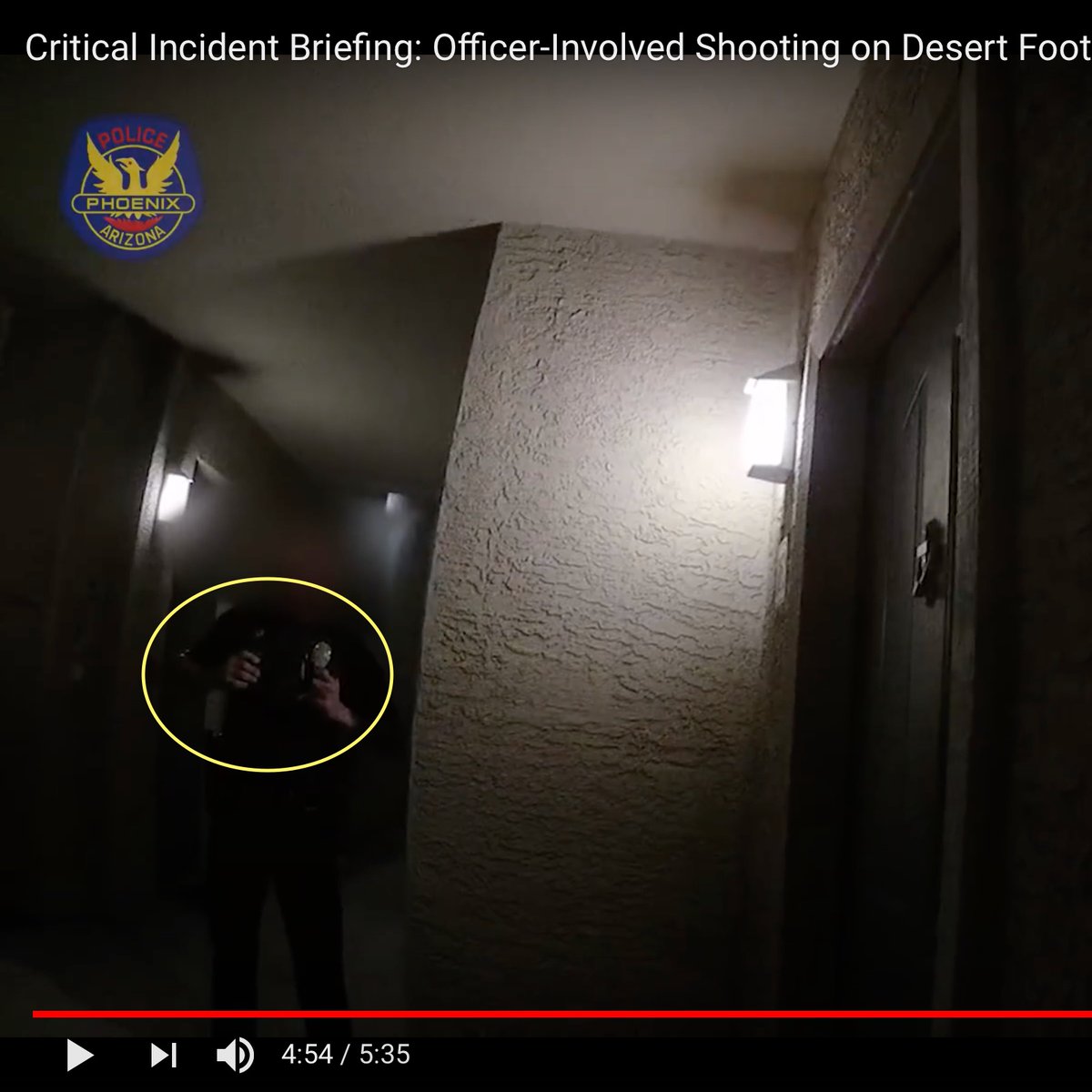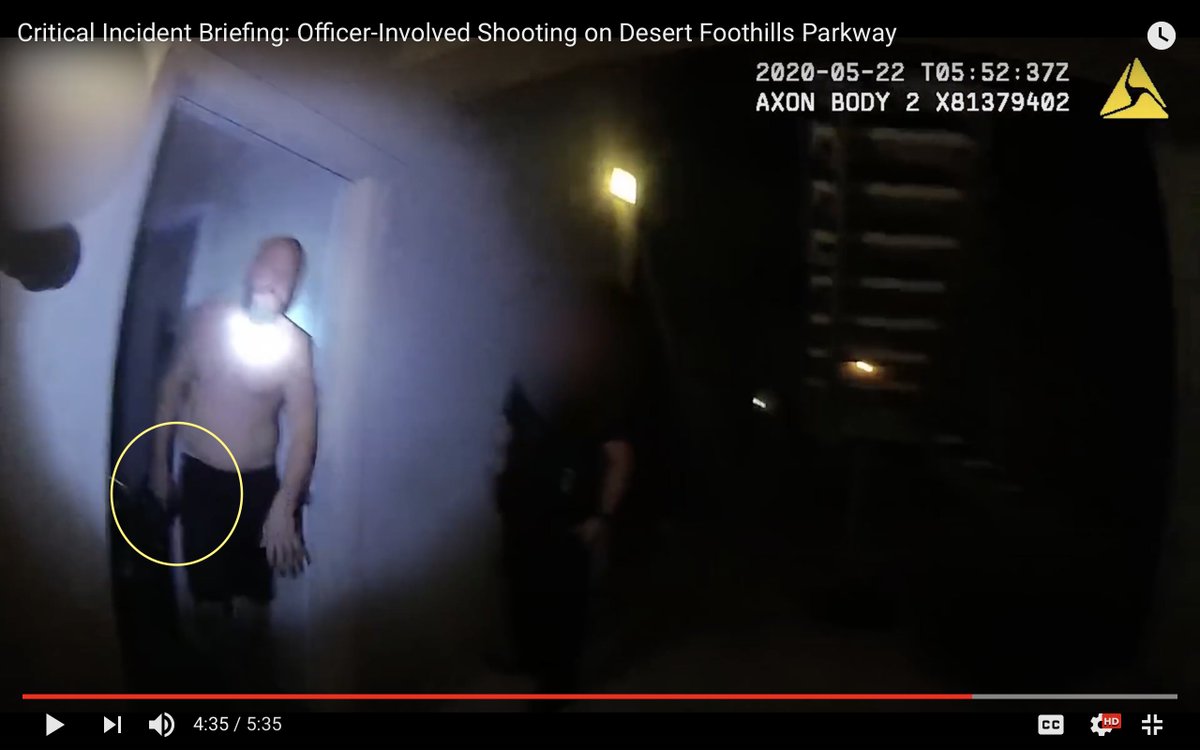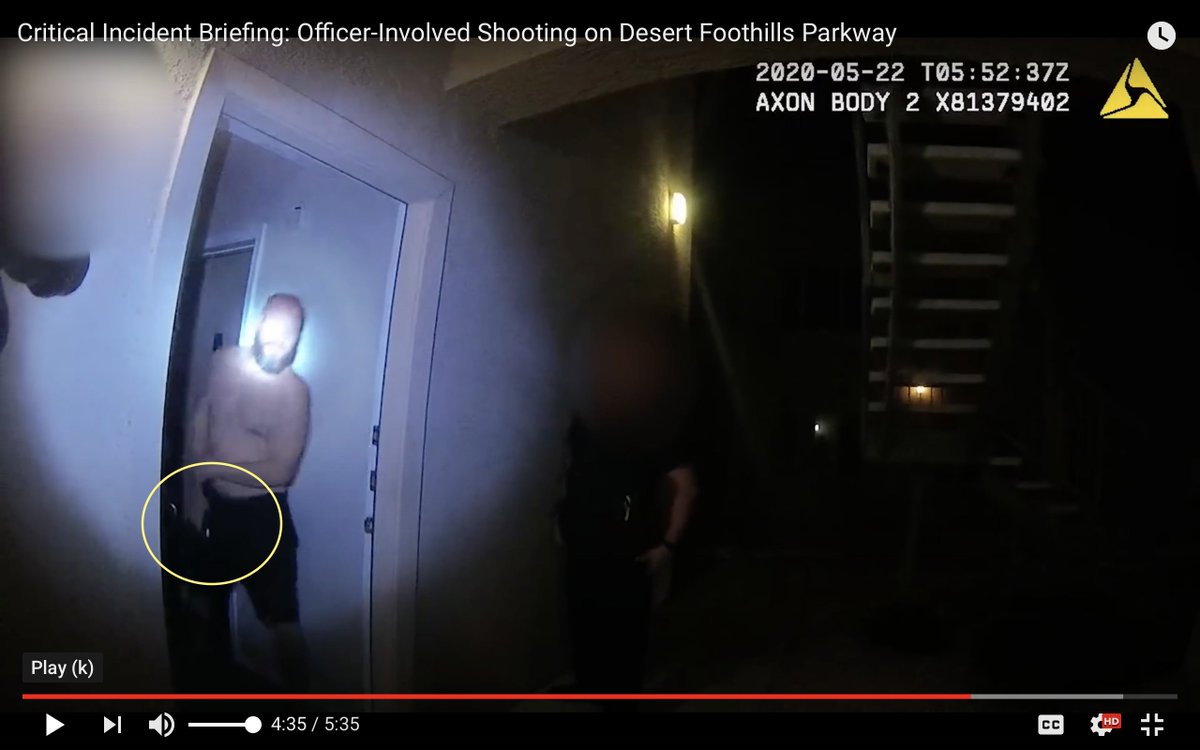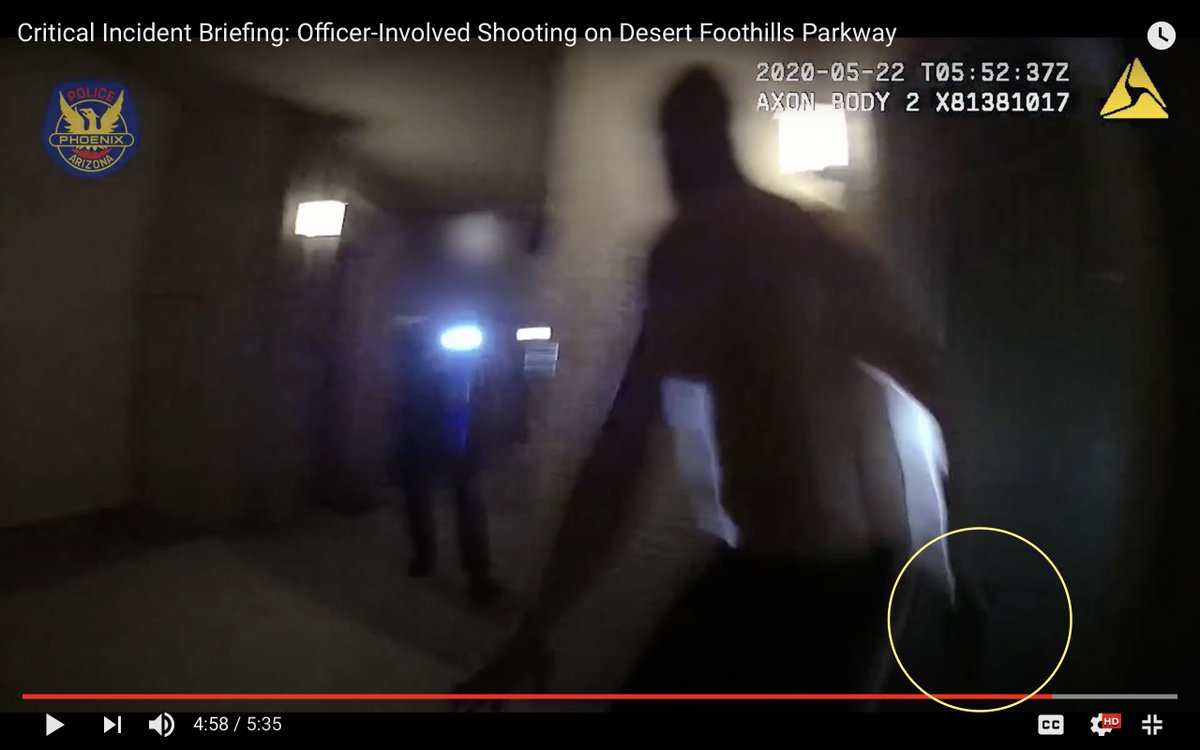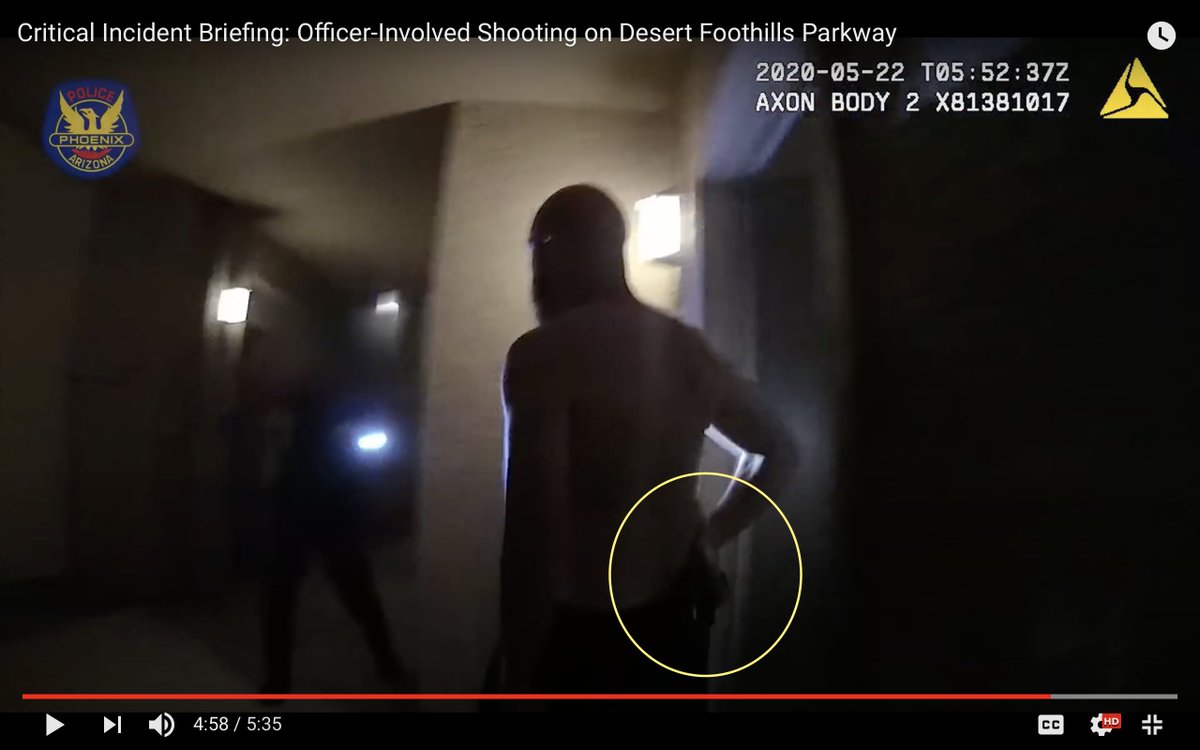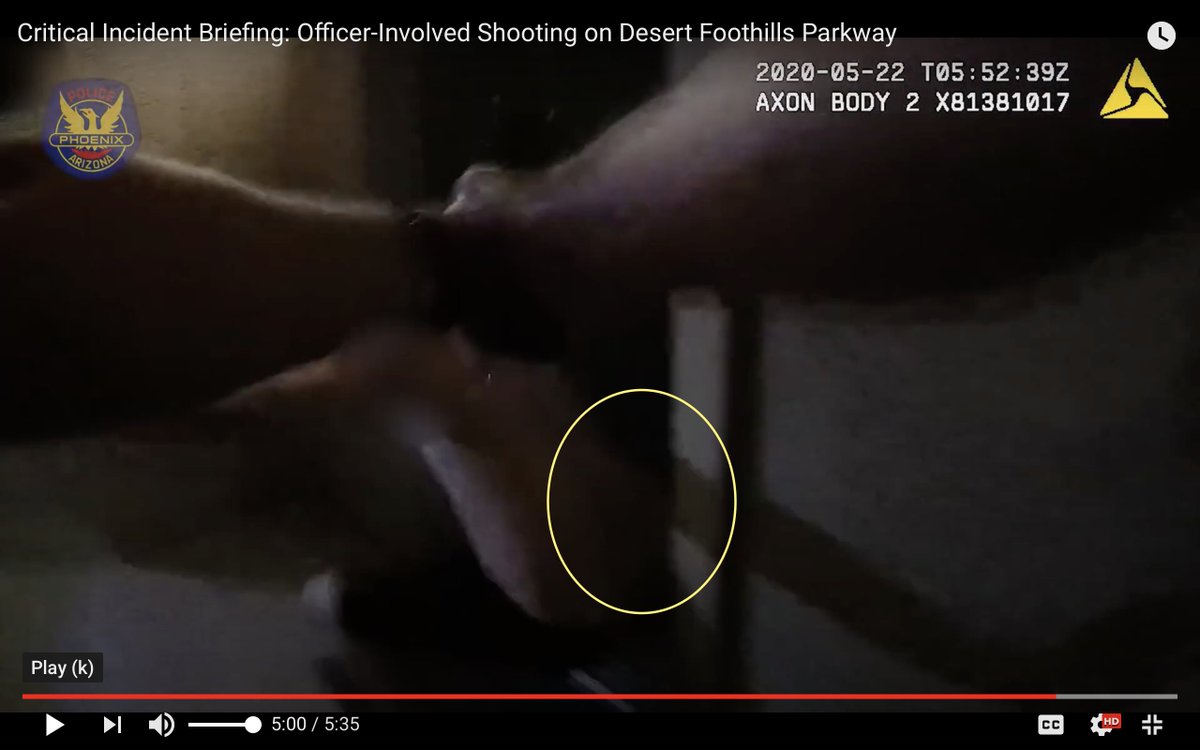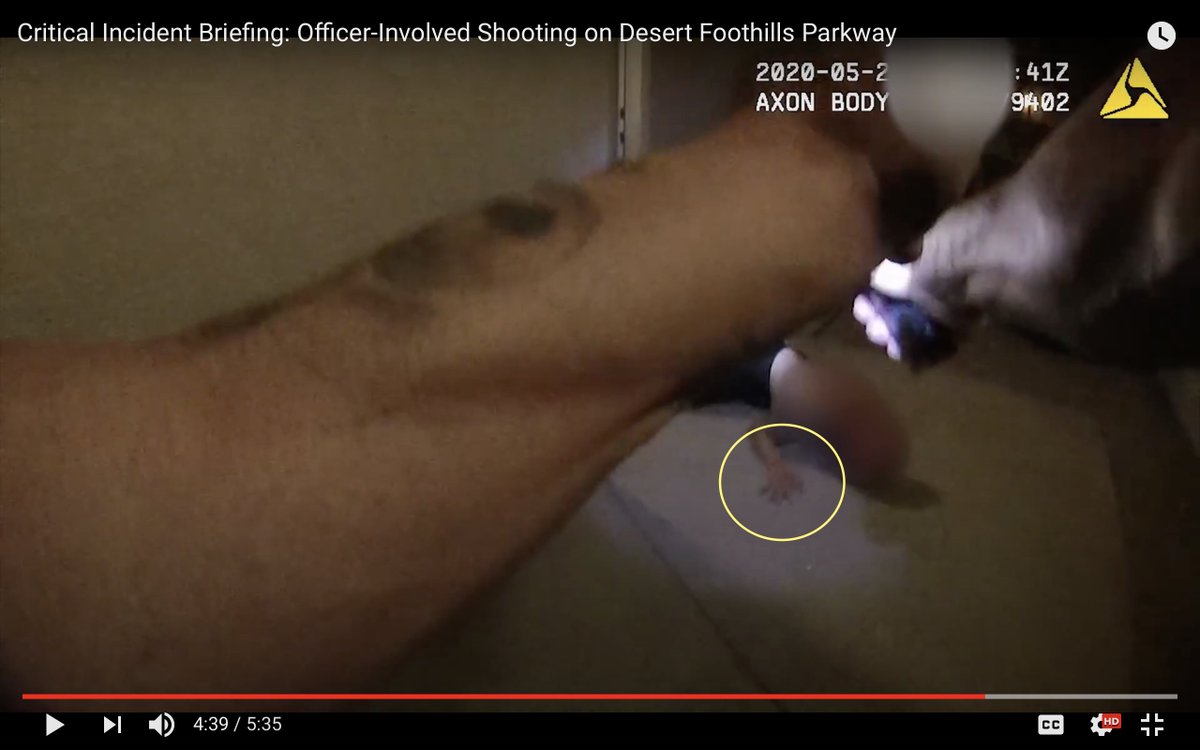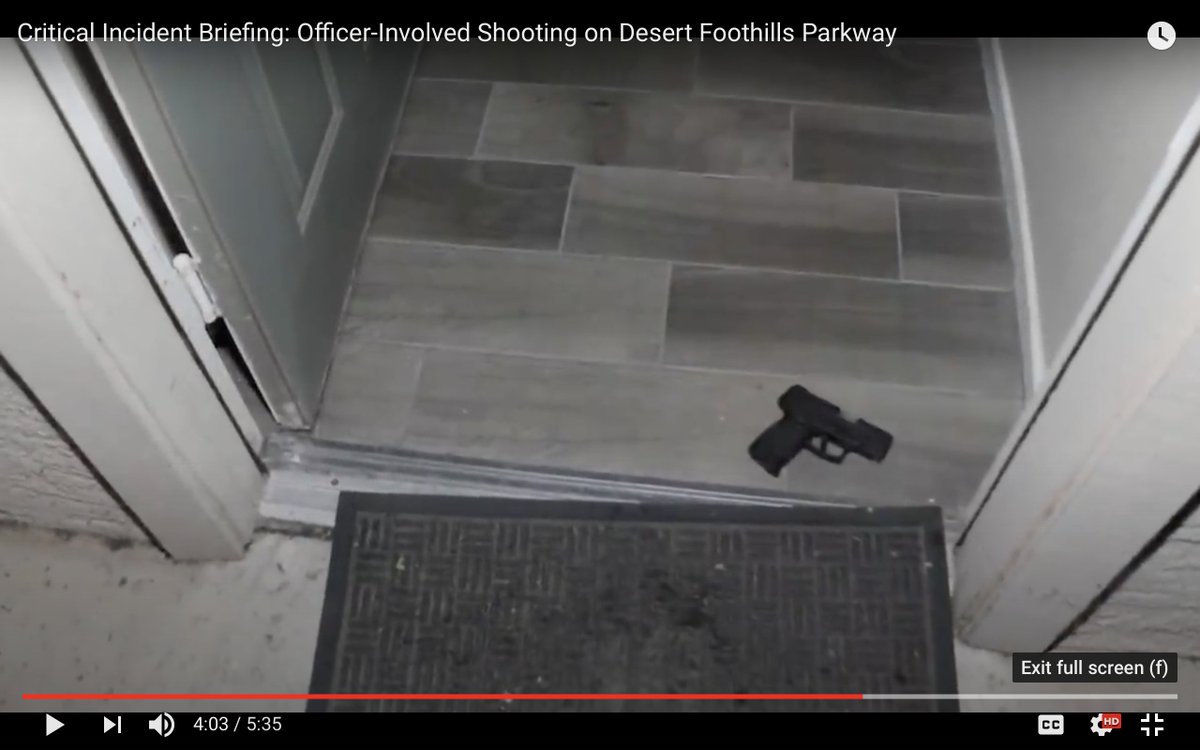THREAD
Phoenix Arizona police shooting broken down:
1) Police arrive after 2 domestic disturbance calls from neighbor
2) 2 officers arrive, knock, announce "Phoenix Police," then back away from door
3) Officers do not have hands on their guns
Phoenix Arizona police shooting broken down:
1) Police arrive after 2 domestic disturbance calls from neighbor
2) 2 officers arrive, knock, announce "Phoenix Police," then back away from door
3) Officers do not have hands on their guns
4) Man opens door holding gun in his right hand, in front of his body
5) First officer yells "whoa!" after seeing the gun and begins to draw his firearm, yelling "hands, hands"
6) Man then puts right hand behind his back, and now second officer sees firearm in man's right hand
5) First officer yells "whoa!" after seeing the gun and begins to draw his firearm, yelling "hands, hands"
6) Man then puts right hand behind his back, and now second officer sees firearm in man's right hand
7) Man kneels & keeps left hand up, but right hand is hidden / concealed in doorway
8) Second officer screams "put your hands down"
9) Second officer cannot see man's right hand as the right hand disappears into doorway, but arm is pointed down, second officer aims & shoots
8) Second officer screams "put your hands down"
9) Second officer cannot see man's right hand as the right hand disappears into doorway, but arm is pointed down, second officer aims & shoots
10) After the man is shot, both hands come into view and he has no gun in hand at that point. The gun was found in the doorway later.
11) From the moment the man steps out with firearm to the moment second officer fires: 3 seconds
12) From the moment the second officer sees firearm to the moment he fires: 1.5 seconds
13) Second officer claims he shot in order to save first officer from man holding gun.
12) From the moment the second officer sees firearm to the moment he fires: 1.5 seconds
13) Second officer claims he shot in order to save first officer from man holding gun.
14) "The `reasonableness' of a particular use of force must be judged from the perspective of a reasonable officer on the scene, rather than with the 20/20 vision of hindsight." Graham v. Connor - SCOTUS 1989
15) Arizona "use of force in crime prevention" jury instruction:
15) Arizona "use of force in crime prevention" jury instruction:
16) Second officer told his command that he was afraid the man with the gun was about to shoot first officer.
17) The facts, as they appeared to him at the time, were that after announcing themselves as police, a man opened the door and came at them with a gun.
17) The facts, as they appeared to him at the time, were that after announcing themselves as police, a man opened the door and came at them with a gun.
18) As first officer drew his weapon, the man concealed his gun behind his back, where the second officer could see it.
19) Then, without being told to do so, the man bent down and into an obscured doorway, where the officers could not see what he was doing with his hands.
19) Then, without being told to do so, the man bent down and into an obscured doorway, where the officers could not see what he was doing with his hands.
20) Not being able to see what the man was reaching for, the man acting on his own accord, considering the gun in the man's hand, the man looking at the first officer, the second officer shot his service weapon thinking this man is about to shoot his partner.
21) This was literally a split-second decision at the moment it was made. The second officer, presumably, thought that if he hesitated, the first officer would be dead.
22) Facts working against a justified shooting: the man had his hands down as the officer commanded.
22) Facts working against a justified shooting: the man had his hands down as the officer commanded.
23) However, the man started standing back up again and the second officer could not see that the hand was empty.
24) The man was not verbally communicating with the officers, did not freeze, and was instead moving the hand that had the firearm in it.
24) The man was not verbally communicating with the officers, did not freeze, and was instead moving the hand that had the firearm in it.
25) Domestic violence calls are some of the most dangerous for officers. According to FBI data, for the period between 1980 and 2006, for example, a total of 113,236 officers were assaulted on domestic calls, and 160 officers died as a result. DV calls are notoriously dangerous.
26) The second officer certainly didn't come to the call with a gun in hand, but upon presentation of the threat and the particular behavior he witnessed, he did what he thought he had to do to save his partner.
27) Monday morning quarterback would have always waited to shoot.
27) Monday morning quarterback would have always waited to shoot.
28) But when each tenth of a second matters, and when an officer is deciding between waiting for the man to shoot, or show what he's doing with his hands, or to reach for new weapons, the officer has to decide what to do. And this officer chose to save his partner's life.
29) The standard by which we judge the officer isn't what we now know after an investigation, that the man dropped his firearm, but by what the officer knew at the time: that the firearm was in the man's hand and now he cannot see what the man is doing with his hand.
30) Could the officer have given better instructions? Yes. Unequivocally.
31) Could the officer have waited to see what the man was doing? Yes. But would the officer have risked his partner's life in waiting? Yes. Unequivocally.
31) Could the officer have waited to see what the man was doing? Yes. But would the officer have risked his partner's life in waiting? Yes. Unequivocally.
32) With great power comes great responsibility. When you answer the police knocking on your door with a firearm in hand, you assume a lethal risk. You immediately become a lethal threat and should expect the officers to arm themselves with lethal weapons in response to you.
33) How you act upon police seeing you with a gun in hand will be the difference between life and death. This man, after an ex post facto review, appears to have been reaching to drop his weapon. But the officers could not see that. And that's the tragedy of this incident.
34) Some argue that maybe the man did not hear the police officers announce themselves.
But he still came out with the gun in hand. He didn't drop it when he saw the officer, he proceeded out holding the gun. And, he didn't communicate. He acted recklessly with a deadly weapon.
But he still came out with the gun in hand. He didn't drop it when he saw the officer, he proceeded out holding the gun. And, he didn't communicate. He acted recklessly with a deadly weapon.
35) The man appears to have tried to fix the situation by dropping the gun in the doorway. Or maybe the gun fell out of his hand when he was shot. It's not possible to tell from the video. The former is more plausible as it explains why he bent down in the first place.
36) But going back to the standard by which we judge: it's not from the perspective of the armed man, or from us playing Monday morning quarterback. We must judge from the officer's perspective, "to the extent he reasonably believed" he was preventing an imminent crime.
37) Based on what we know right now (and we must always be open to the possibility that new evidence, or reconsideration of the same evidence, might yield a different conclusion): I would find this officer not guilty.
More than that, I would not charge him with a crime.
More than that, I would not charge him with a crime.
38) Someone asked why the officers moved away from the door after knocking. It's a tactical, trained move, they don't know what will be coming through that door. Backing away will give them space, an opportunity, to respond to a threat. Like a man with a gun. @pvtjokerus can add.
39) The argument that the man was afraid and armed himself fails. Evidence of fear would show him asking who is at the door without opening it, hesitating to come out, peeping first, opening slowly, etc. He came out fast and with confidence, offensive posture, not defensive.

 Read on Twitter
Read on Twitter